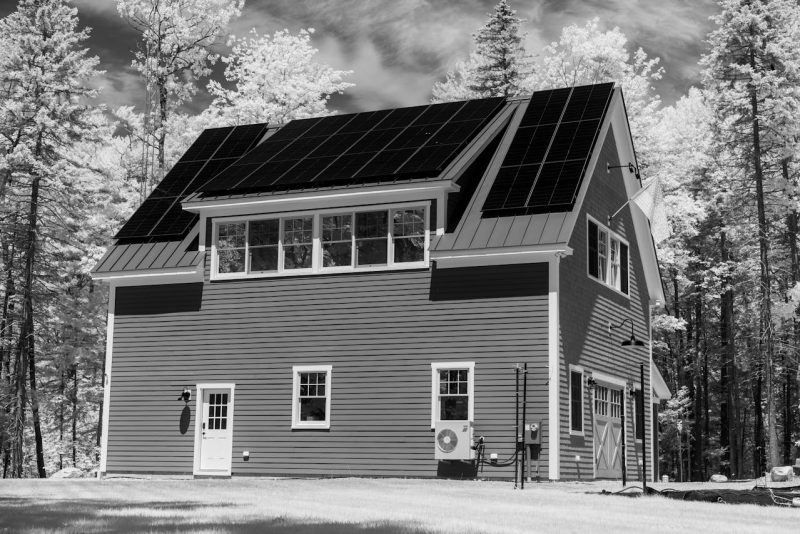Renewable energy is becoming more popular. This is because people are more aware of the increasing environmental concerns — global warming and climate change — that can threaten future generations.
These issues drive people to opt for renewable energy sources, and many governments and environmental organizations have been trying to champion the adoption of renewable energy technology at the state level. These sources are clean and infinite, meaning they can continuously generate power without emitting harmful gasses into the atmosphere.
You can also contribute to this effort by adopting home renewable energy technologies. These technologies offer homeowners a chance to adopt clean energy and enjoy several side benefits.
This article contains the guides to adopting renewable energy for your home. It will explain the types, advantages, and ways to integrate the technology at the household level. Reading this article is the first step to a more sustainable future for the next generation. So, why delay? Learn more in the next sections!
Understanding the need for renewable energy
To begin with, it’s important to discuss conventional energy sources like fossil fuels. For years, people have benefited from industrialization, which introduced machines that consume fossil fuels to generate power. Sadly, these machines also emit harmful gases, known as greenhouse gases (GHG).
The high level of GHG in the atmosphere can intensify global warming and climate change, impacting aspects of human life. This issue can be mitigated by adopting renewable energy because its source emits almost zero GHG into the atmosphere. This can indeed balance the neverending demand for the world’s energy that harms the environment.
Other than low GHG emissions, the adoption of renewable energy at home can give you several benefits:
Lower energy bills
It is a known fact that renewable energy technology has a high installation cost. Yet it all pays off after it saves you 62% on energy bills. The savings can cover the high initial cost and can even be profitable after 8 to 9 years.
When coupled with grid electricity, in addition to the size of the solar panels and the amount of exposure to sunlight, you can save up to $580 per year in electricity bills.
Lower maintenance costs
Renewable energy technology experiences cost declines as more capacity is installed. This is because renewable energy technology has low operational and maintenance costs. Its fuel is also free because it is generated from infinite natural sources.
This shows that renewable energy offers more than clean and efficient energy. It also offers homeowners a significant benefit: cheaper energy.
Increased property value
For every $1 reduction in annual utility bills achieved through a solar energy system, your home’s value increases by $20. This means a solar energy system saving $200 per year on utility bills could add $4,000 to your home’s value.
More than that, eight out of ten Americans now prefer to have solar power technology installed in their homes. Four of them are even willing to pay 10% more for a house with solar power technology.
Read more: Boosting Property Value Through Home Improvement
Types of renewable energy sources
Alternative energy sources are not depleted, so they can be continuously used without running out. This sustainability is in contrast to finite fossil fuel resources. Renewable resources are geographically widespread, meaning they are available in various locations across the globe. This section will discuss the most common sources of renewable energy that can help you out.
Solar energy and solar photovoltaic (PV) systems
Solar energy is emphasized for its enormous potential. The Earth receives abundant solar energy, far surpassing current human energy consumption. This makes solar power one of the most sustainable renewable energy sources.
Solar photovoltaic (PV) systems are popular for generating electricity from sunlight. These systems consist of PV modules assembled into arrays, which can be installed on or near buildings. Building-integrated photovoltaic (BIPV) products are designed for existing buildings and can be roofing materials, facades, or skylight glazing.
This home solar power system requires adequate space for its installation. The average system size is around 3.5kWp, requiring approximately 20m² of roof area. South-facing roofs without shading are ideal for maximum electrical output. East or West-facing roofs are acceptable but may yield 15-20% less energy than south-facing ones. North-facing roofs are not recommended.
Wind energy and wind turbines
Wind energy is presented as another alternative energy source. Wind turbines capture energy from the movement of the atmosphere, working even on cloudy or rainy days. The location of wind turbines significantly affects their performance.
Wind energy is harnessed using modern turbines that capture the kinetic energy from wind flow, generating electricity. Wind resource assessments help determine the feasibility of wind installations in specific locations. Wind turbines have an operating life of up to 20 years and require relatively low maintenance.
Roof-mounted wind systems are an emerging option for buildings but come with structural and cost considerations. When placed strategically, wind turbines can be the most efficient renewable energy for the home. They are generally around 2kW in size.
Pole-Mounted Wind Turbines are free-standing wind turbines erected in exposed positions. They typically have a higher generation capacity, around 6kW or more.
Biomass energy and organic waste
Biomass energy, derived from plant and animal wastes, is identified as a green energy solution, especially in agricultural contexts. It can be harnessed from various forms of biomass, including biodegradable waste.
Bioconversion processes are described as environmentally friendly and cost-effective. Biomass technologies convert organic matter, including plants, agricultural residue, and waste, into fuels, chemicals, and power.
At the residential level, biomass heating technologies harness the energy from organic materials like wood, wood pellets, and yard waste to generate heat for residential and commercial properties.
The availability of biomass fuel is an important consideration. Some areas have suppliers that offer pellet deliveries, while log supplies can vary. Biomass boilers and stoves are larger than gas or oil equivalents and require space for fuel storage. The location should be convenient for deliveries and suitable for boiler installation.
Implementing renewable energy in your home
You must evaluate the technology that can maximize renewable energy for your home. Evaluation activities provide data and insights that support informed decision-making at every stage of an energy program’s lifecycle.
Whether it is planning, budgeting, implementation, analysis, or communication, having access to evaluative information helps program managers make better choices. Program evaluation allows stakeholders to assess whether their energy programs align with their strategic goals and objectives.
Conduct an energy audit
Homeowners must be well prepared by strategizing renewable energy integration in their households. Homeowners can carry out an energy auditing task by themselves, although it is recommended to ask professionals to help brainstorm. Here are some key points on what to consider:
- Analyzing electricity loads. You must analyze the current electricity consumption before choosing the renewable energy technology you want. You have to monitor the daily usage of electricity to make sure how much energy must be generated by your potential home renewable energy system.
- Local codes and requirements. You must know local laws and regulations regarding home renewable energy adoption. You must ensure there is no complication involving authorities after the installation.
Choose the right renewable energy system
Before selecting a renewable energy system, it’s essential to understand how each technology works. This knowledge helps you decide based on your property’s specific needs and conditions. Here are the key considerations:
- Renewable energy technologies. Several renewable energy technologies are available for home use, including small home solar power electric systems, small home wind electric systems, and small hybrid electric systems (combining solar and wind).
- Energy efficiency measures. Consider implementing energy-efficient measures at home to reduce electricity consumption. This can result in a smaller and more cost-effective renewable energy system.
- Grid-connected vs. stand-alone systems. Decide whether the renewable energy system is preferred to be connected to the grid or operated as a stand-alone (off-grid) system. Grid-connected systems allow the excess power to be sold back to the utility, while stand-alone systems are self-sufficient.
- Hybrid systems. Hybrid systems that combine different renewable energy sources, such as solar and wind, can be more reliable and efficient since they can generate power at different times.
In conclusion
Global warming and climate change are huge ecological threats influencing every facet of human life. To ensure this, greenhouse gas emissions must be minimized. Adopting a household renewable energy system is a pragmatic choice and a moral imperative.
By embracing renewable energy sources such as solar panels, wind turbines, and biomass energy systems within homes, individuals can actively contribute to reducing carbon footprints and mitigating environmental degradation.
This shift towards renewable energy installation at the household level demonstrates a commitment to environmental stewardship. It empowers homeowners to be agents of positive change.
Through collective action and individual commitment, homeowners wield the power to catalyze positive change. They can foster a world where clean, renewable energy is the cornerstone of a vibrant, resilient society. Start a better world for future generations today!
If you would like to see more resources on renewable energy, check out the Home Organization Science Labs. The lab uses the research of the Institute for Life Management Science to produce courses, certifications, podcasts, videos, and other tools. Visit the Home Organization Science Labs today.
Photo by Skyler Ewing on Pexels


